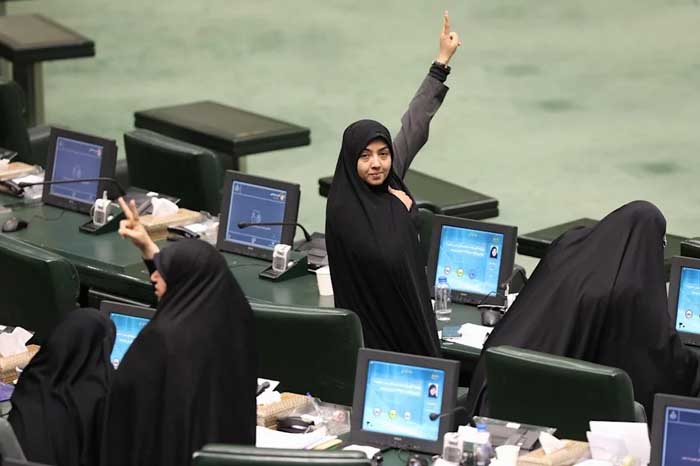 News Staff
News Staff![]() -
December 3, 2024 -
Arts & Culture
chastity and hijab law
-
1.4K views -
0 Comments -
0 Likes -
0 Reviews
-
December 3, 2024 -
Arts & Culture
chastity and hijab law
-
1.4K views -
0 Comments -
0 Likes -
0 Reviews

DLNews Culture:
The plight of women in Iran remains one of the most heartbreaking chapters of modern gender inequality. It is not an exaggeration to say that being born a woman in this context often means living a life of systemic repression and surveillance. The recently enacted “chastity and hijab” law further entrenches this reality, reinforcing the state’s control over women’s bodies and choices. Far from fulfilling promises of reform and progress, this law exposes the deep-rooted fear and control mechanisms that define the current regime.
Under this new legislation, women who fail to comply with the mandated hijab requirements face an escalating series of punishments. Initial violations result in hefty fines, a penalty meant to enforce conformity and remind women of their secondary status. If a woman dares to question these measures, she faces even steeper financial penalties. The law extends its grasp to girls as young as nine, making headscarves compulsory and punishing families that fail to comply. The fines are crippling for many, reflective of an economy strained under international sanctions and mismanagement. This economic context only deepens the cruelty, as penalties often impose an impossible financial burden on struggling families.

Street scene in Tehran: The brave woman on the left is not wearing a headscarf and faces severe punishment under the new, more stringent law. The woman on the right is covered as required. Only her face and hands are visible.
But fines are just the beginning. The law arms the government with surveillance tools that permeate daily life. Residential managers who refuse to submit video evidence of women flouting the hijab rules face steep fines, and taxi drivers are coerced into becoming informants. Women’s freedoms are restricted at every turn, with even minor expressions of individuality, such as showing forearms, ankles, or necklines, subject to punishment. The cost of defiance is high, with some women facing corporal punishment for acts as simple as uncovering their hair.
The story of one woman, shared by activist Masih Alinejad, captures the brutal extent of these laws. A photo of her battered body, scarred by 74 lashes, stands as a stark testament to the regime’s inhumanity. Her crime? She dared to show her hair—a choice that would be unremarkable in a free society but, in Iran, becomes a symbol of resistance.

The fact that women allow themselves to be paid and used to oppress other women is particularly treacherous.
The fear driving these oppressive measures is palpable. At its core, this system reflects a deep-seated anxiety about women's power and autonomy. By legislating against women’s freedom, the regime seeks to maintain control in a rapidly changing world. But this suppression cannot last forever. History has shown that such systems inevitably falter when faced with the unyielding courage of those who refuse to be silenced.
The international community has a role to play in supporting Iranian women. Amplifying their voices, advocating for their rights, and exposing the injustices they face can help shift the tide. For every woman in Iran who is risking everything for her dignity and freedom, solidarity remains a vital lifeline.

At Desert Local News, connections are everything. We're not just another social networking platform—we're a lively hub where people from all walks of life come together to share stories, spark ideas, and grow together. Here, creativity flourishes, communities grow stronger, and conversations spark global awareness.